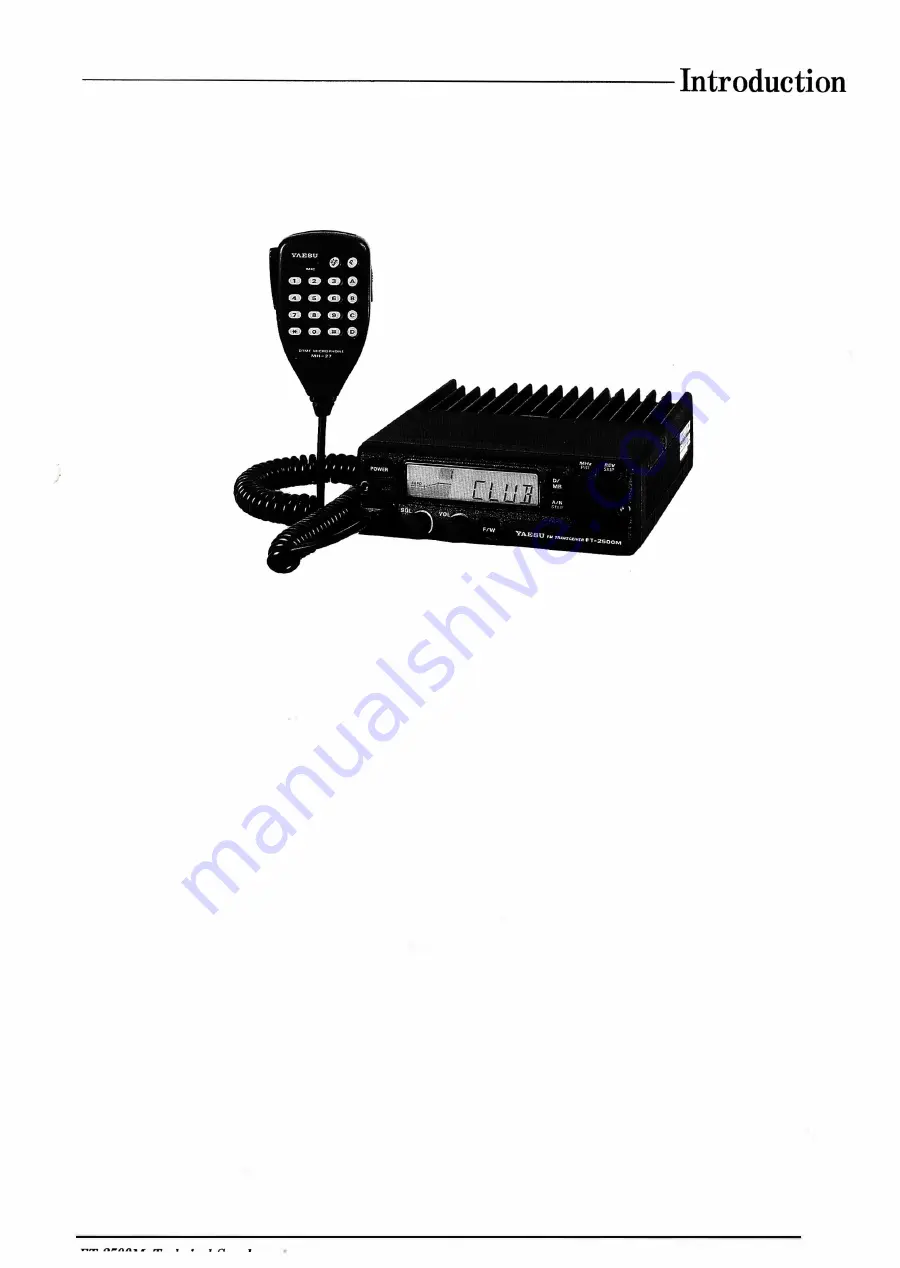
The FT-2500M is Yaesu's new successor to the
famous FT-2400H, the industry's first amateur
transceiver designed to meet rugged U.S. mili
tary specifications for shock and vibration (MIL
SPEC 810-C). The FT-2500M is upgraded with a
new front panel and control knob layout, and
additional operator features.
Selectable power output of 5, 25 or 50 watts
without the need of forced air cooling is possible
due to the large heatsink surface area of the com
partmentalized one-piece diecast chassis. Back
lighting for the large LCD (display) and knobs is
manually adjustable, or automatically controlled
by a photosensor, and the less-used buttons have
a flip-down protective cover. The thirty-one tun
able memories can each be programmed with a
4-character channel name, which can then be dis
played in place of frequency, as desired.
Each memory offers complete programmabil
ity and scanning functions, such as independent
tx/rx frequencies, independent repeater offset
and CTCSS tone, programmable scan limits, se
lectable scan resume modes and memory skip,
priority monitoring and a 1-touch instant-recall
CALL channel. Channel steps are user-selectable
from 5 to 50 kHz, and Automatic Repeater Shift
can set standard repeater shifts when you tune to
a repeater subband. A 1750-Hz tone generator is
included in European versions. A 39-tone pro
grammable CTCSS encoder is built in as stand
ard, and the FTS-17 A CTCSS unit can be installed
to provide tone squelched private channels and a
CTCSS paging bell feature to sound a paging
alert tone when the tone squelch opens.
DTMF (Dual-Tone, Multi-Frequency) -based
selective calling and private paging capabilities
can be easily added with the optional FRC-6,
controlled entirely from the front panel. You can
select any of 999 3-digit ID codes for your trans
ceiver, and then have your receiver stay quiet
until your code is received (from any standard
DTMF-equipped transceiver). When a call is re
ceived, the FT-2500M displays the caller 's code,
and a paging beeper can be set to sound and even
to respond to the call automatically. Seven DTMF
code memories store your ID plus those of six
other frequently-called stations or groups you
wish to monitor.
1 -1


















